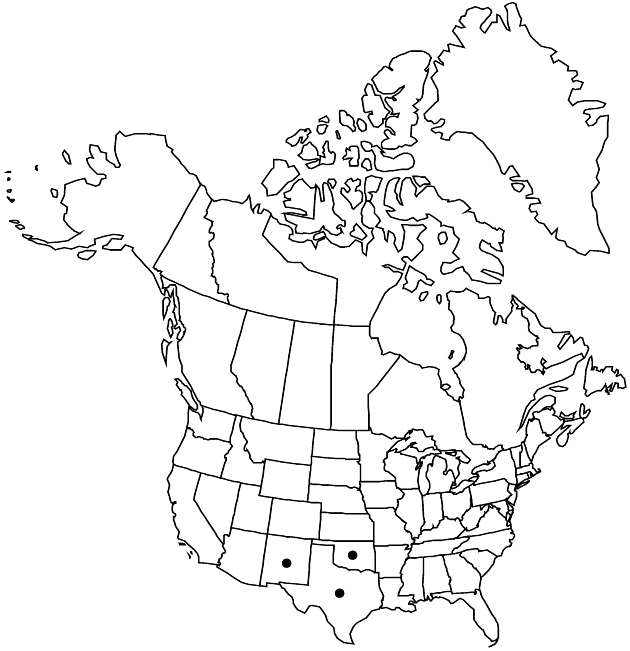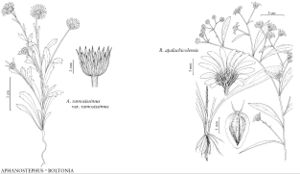Aphanostephus ramosissimus var. ramosissimus
Treatment appears in FNA Volume 20. Treatment on page 353.
Revision as of 21:17, 29 July 2020 by imported>Volume Importer
Plants 20–45 cm. Involucres 3.2–4.8 mm. Ray-florets 20–41. Cypselae (1–) 1.2–1.4 mm; pappi coroniform, indurate, cupuliform, 0.2–0.6 mm, usually minutely ciliate. 2n = 8.
Phenology: Flowering (Feb–)Apr–Jul(–Sep).
Habitat: Sand and sandy loam, black loam, silt, caliche, rocky limestone soils, stream bottoms, oak-juniper openings, mesquite pastures, roadsides, fencerows, disturbed sites
Elevation: 900–2500(–4000) m
Distribution

N.Mex., Okla., Tex., Mexico (Chihuahua), Mexico (Coahuila), Mexico (Nuevo León), Mexico (Tamaulipas)
Discussion
Selected References
None.
Lower Taxa
None.
... more about "Aphanostephus ramosissimus var. ramosissimus"
introrse +
connate +
distinct +
herbaceous +
scarious +
hirsute +
papillate +
continuous +
decurrent +
1-nerved +
broadly oblanceolate;linear-lanceolate +
ribbed +
stigmatic +
persistent +
absent +
swollen +
indurate +
absent +
absent +
monomorphic +
4-12-thick-ribbed +
dimorphic +
1.2mm;1.4mm +
staminate +
straight +
distinct +
proximal +
1;5 +
bisexual +
dispersed +
Sand and sandy loam, black loam, silt, caliche, rocky limestone soils, stream bottoms, oak-juniper openings, mesquite pastures, roadsides, fencerows, disturbed sites +
straight +
singly +
indeterminate +
Present +
surrounding +
depressed-hemispheric +
alternate +
erect +
deltate +
scarious +
purplish +
broad +
2-carpellate +
inferior +
attached +
anatropous +
persistent +
absent +
indurate +
tough +
thick +
absent +
connate +
1-nerved +
persistent +
appressed +
distinct +
falling +
ovatelanceolate +
acute +
in A. P. de Candolle and A. L. P. P. de Candolle, Prodr. +
1836 +
pistillate +
absent +
fertile +
epaleate +
pitted +
conic +
fibrous +
awn-tipped +
connate +
setiform +
exalbuminous +
modifed +
1;3;4 +
Illustrated +
alternate +
branched +
spreading-hairy +
deltate +
2-branched +
glabrous +
Aphanostephus ramosissimus var. ramosissimus +
Aphanostephus ramosissimus +
variety +
tubular +
hispidulo-puberulent +
taprooted +
annual +
